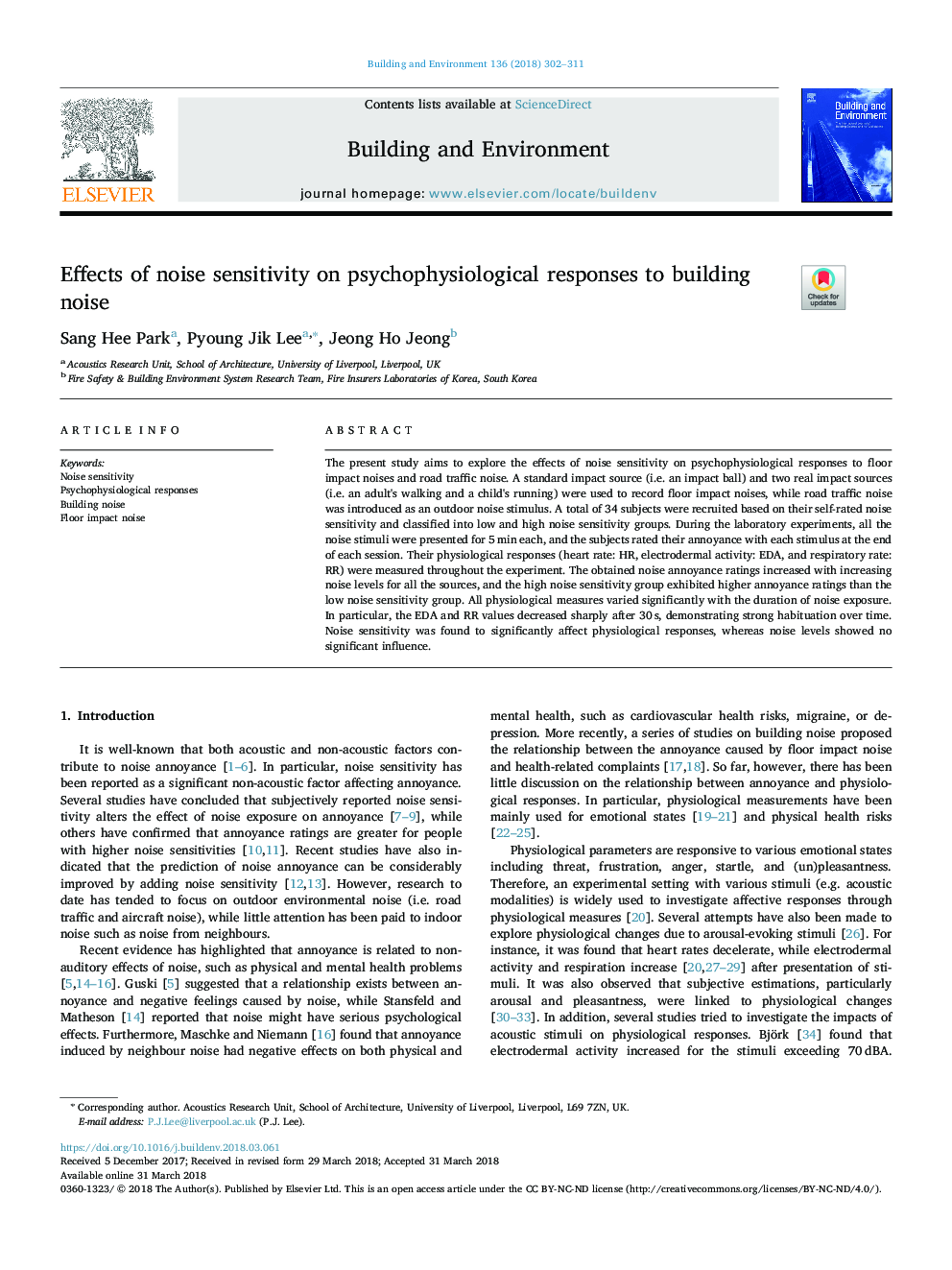| Article ID | Journal | Published Year | Pages | File Type |
|---|---|---|---|---|
| 6697538 | Building and Environment | 2018 | 10 Pages |
Abstract
The present study aims to explore the effects of noise sensitivity on psychophysiological responses to floor impact noises and road traffic noise. A standard impact source (i.e. an impact ball) and two real impact sources (i.e. an adult's walking and a child's running) were used to record floor impact noises, while road traffic noise was introduced as an outdoor noise stimulus. A total of 34 subjects were recruited based on their self-rated noise sensitivity and classified into low and high noise sensitivity groups. During the laboratory experiments, all the noise stimuli were presented for 5â¯min each, and the subjects rated their annoyance with each stimulus at the end of each session. Their physiological responses (heart rate: HR, electrodermal activity: EDA, and respiratory rate: RR) were measured throughout the experiment. The obtained noise annoyance ratings increased with increasing noise levels for all the sources, and the high noise sensitivity group exhibited higher annoyance ratings than the low noise sensitivity group. All physiological measures varied significantly with the duration of noise exposure. In particular, the EDA and RR values decreased sharply after 30â¯s, demonstrating strong habituation over time. Noise sensitivity was found to significantly affect physiological responses, whereas noise levels showed no significant influence.
Keywords
Related Topics
Physical Sciences and Engineering
Energy
Renewable Energy, Sustainability and the Environment
Authors
Sang Hee Park, Pyoung Jik Lee, Jeong Ho Jeong,
